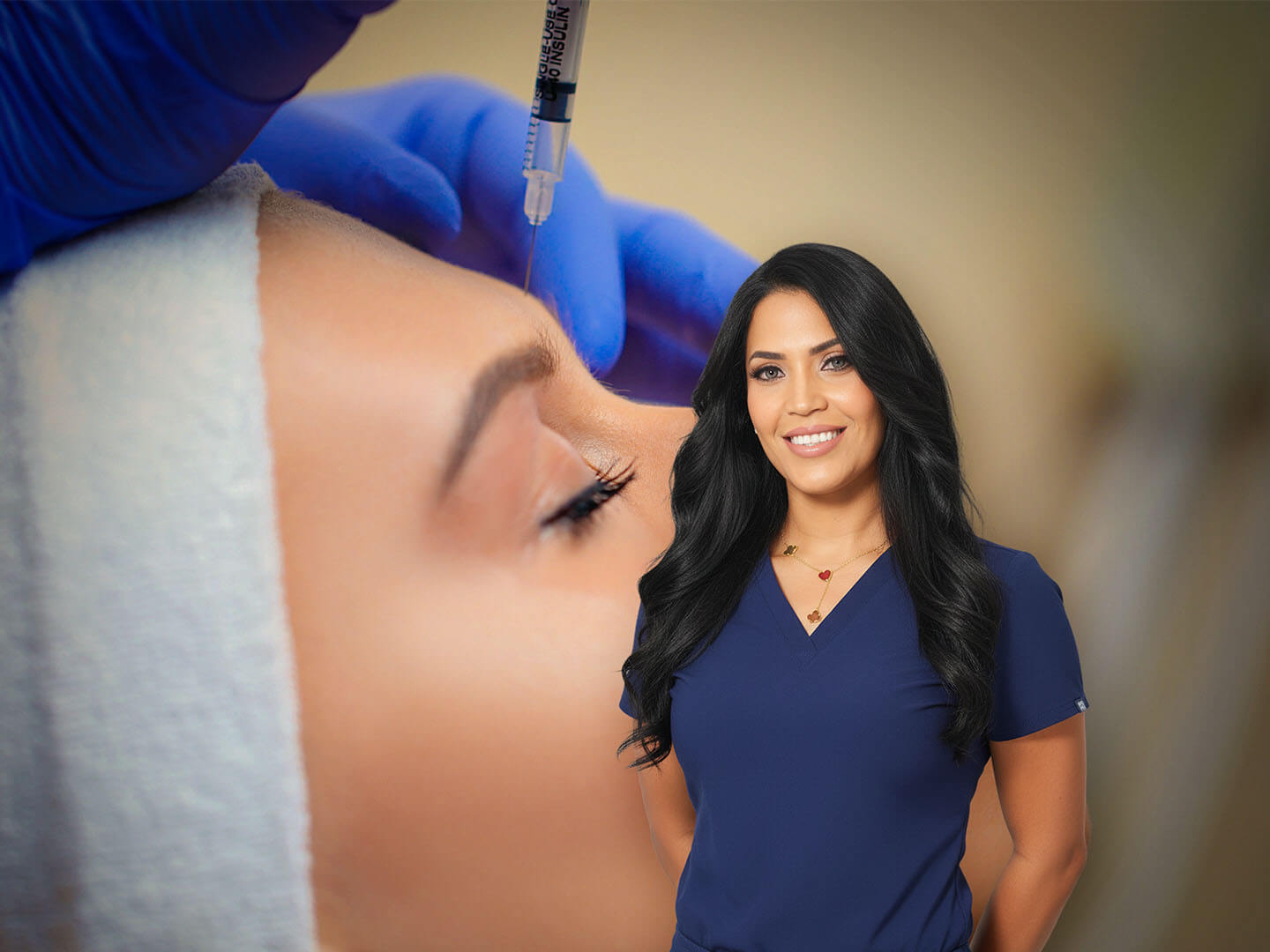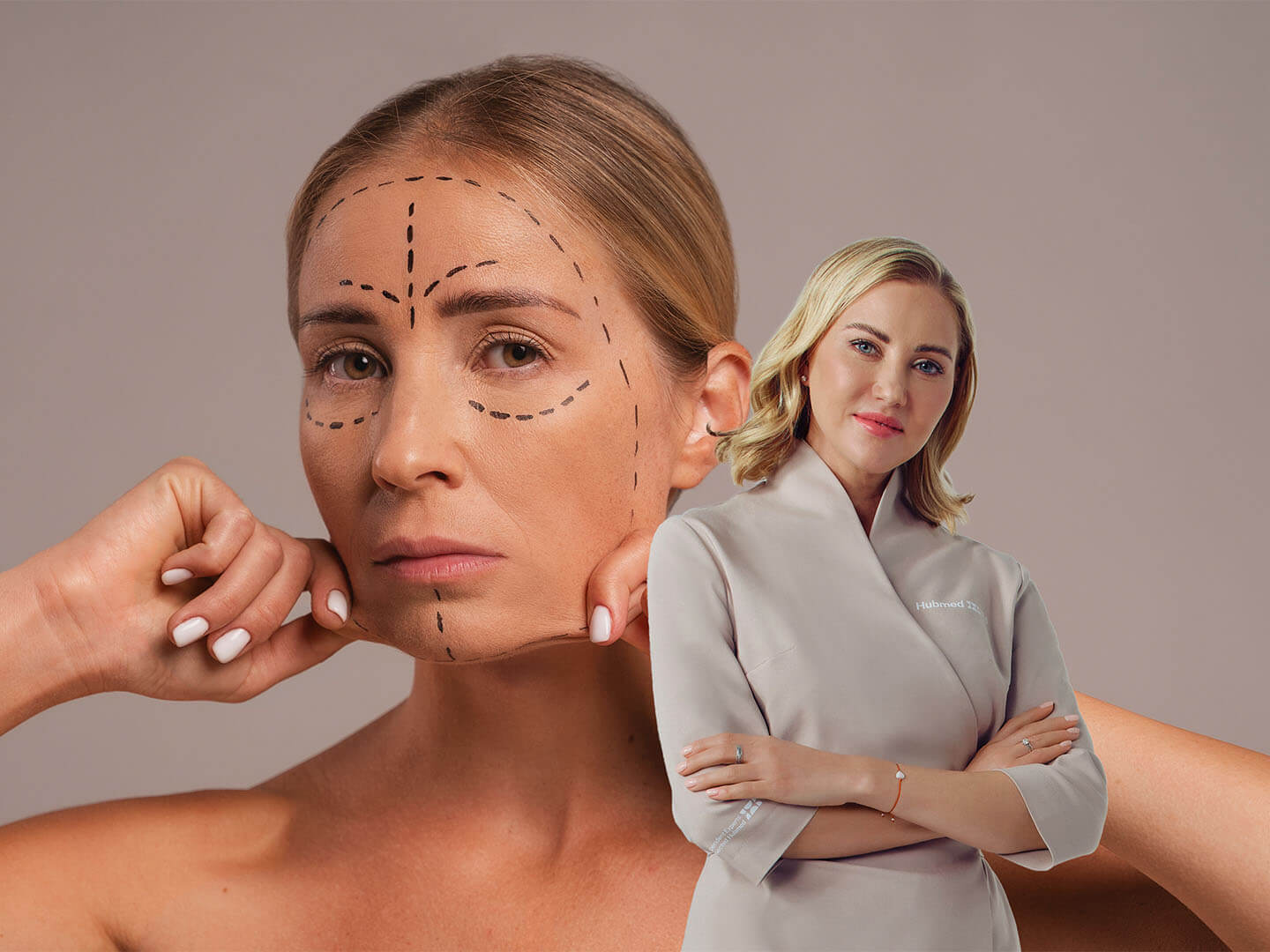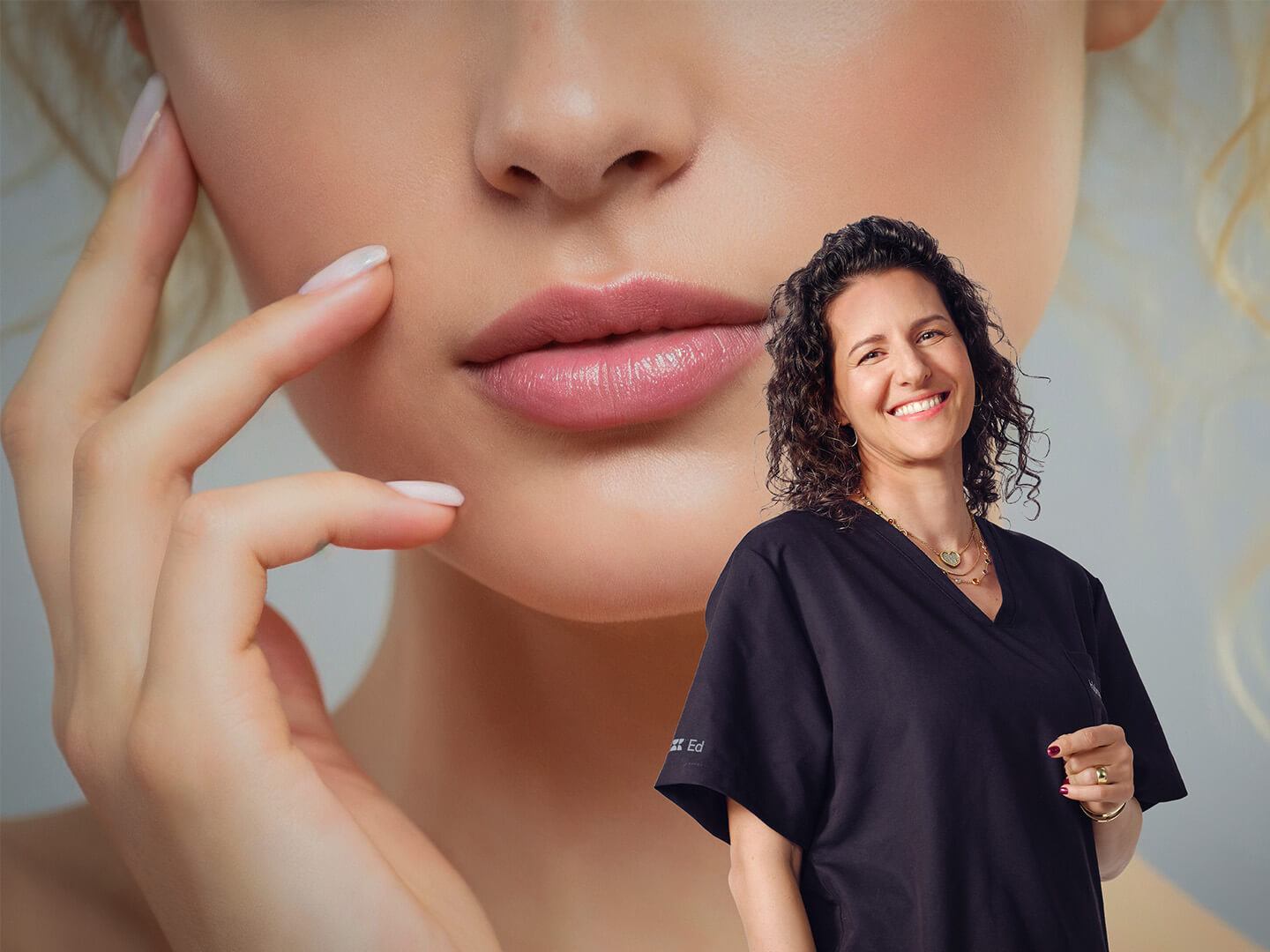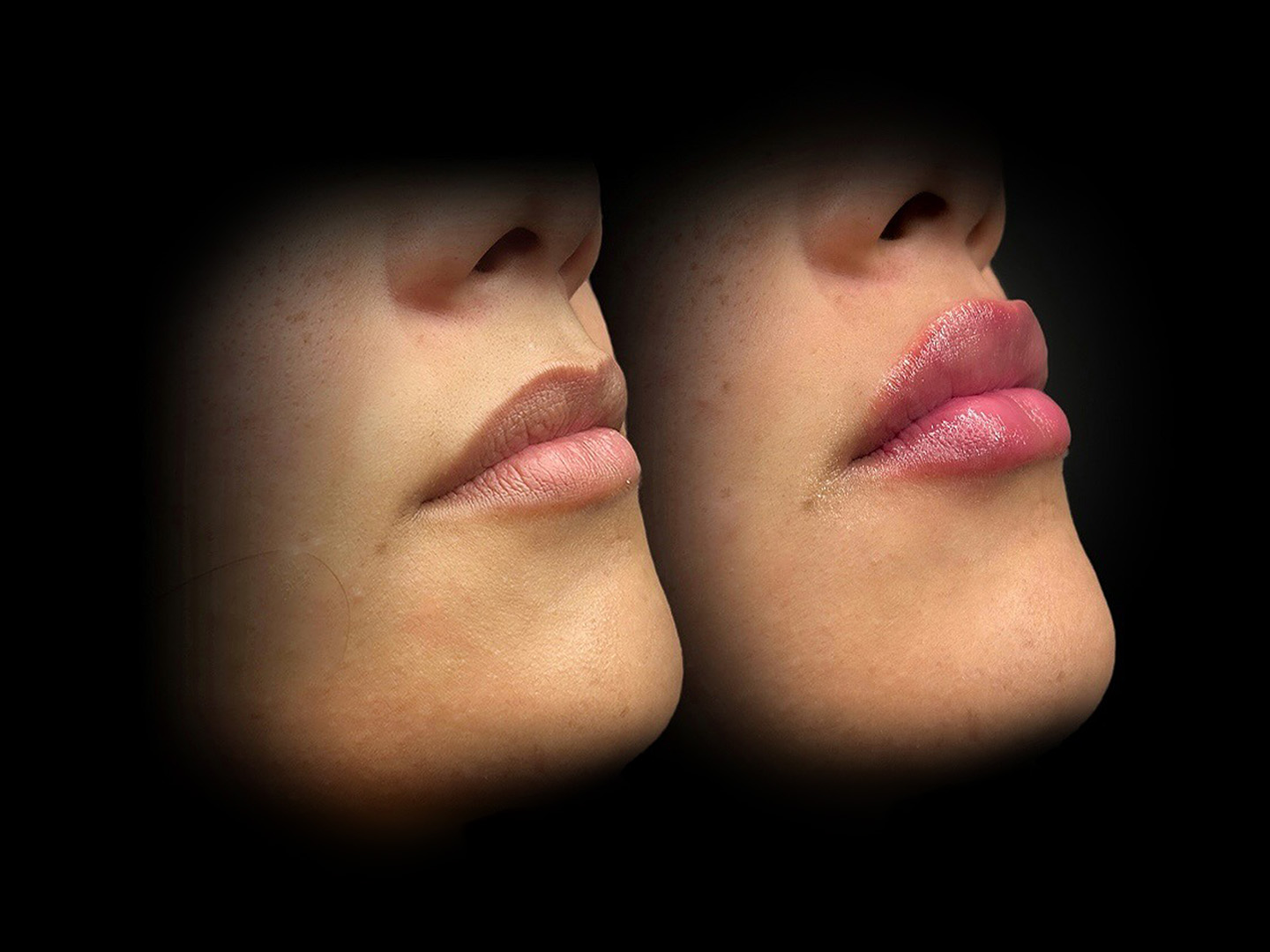
Introduction
Interestingly, the Aesthetic Society has reported a significant 23% increase in cosmetic procedures in 2022, with women making up 95% of those seeking these treatments (surgical and non-surgical).
With this module, healthcare professionals can better understand the nuances of the "Barbie" aesthetic and its principles. It will help doctors address patient worries and focus on safety and natural results for achievable aesthetic results.
What is the 'Barbie' Look All About?
When discussing the aesthetic principles of the "Barbie" look, we explore the characteristics and features typically associated with the appearance inspired by the famous Barbie doll. This beauty trend focuses on features such as
Symmetry:
Symmetry refers to the balanced proportions of facial features. Different cultures value symmetry for its connection to attractiveness and beauty.
Flawless skin:
Achieving clear, radiant, and flawless skin involves addressing concerns such as acne, hyperpigmentation, and uneven texture.
Sculpted features:
Emphasis on sculpted facial features such as high cheekbones, a defined jawline, and a sleek neck.
Youthful appearance:
A healthy balance of collagen and elastin is essential to maintaining a youthful appearance, Facial fullness is defined through well-defined cheeks and lips, supported by fat pads, while a strong jawline and prominent cheekbones complement the look.
Pretreatment Considerations
A responsible approach requires a comprehensive patient assessment beyond simply addressing the desired aesthetic outcome. This includes evaluating medical history, psychological well-being,1,2 and underlying motivations to ensure the patient makes informed decisions. Using a mirror can be a useful tool to identify specific concerns in facial zones. A picture that reflects the patient's facial structure can aid communication and planning for enhancements. The clinician can use pre-treatment photographs and different schemas to analyze facial aesthetics and proportions.
It's important to be mindful of the potential for body dysmorphia (BDD), a mental health condition characterized by a persistent preoccupation with perceived flaws in one's appearance. BDD patients seeking cosmetic procedures may be at higher risk, requiring thorough psychological evaluation and potential referral to mental health professionals.
Steps3 to Ensure Safe and Effective Application Treatment
- Shift Focus: Explain the move from wrinkle-chasing to a 3D approach with volume restoration.
- Educate on Benefits: Explain how volume restoration (e.g., in cheeks) reduces folds (e.g., nasolabial fold).
- Address Concerns: Correct the misconception that wrinkle removal is enough.
- Counteract Media Hype: Reassure patients that "volume restoration" won't create a "fat" face.
- Visual Aids: Use a patient's younger photo to show volume loss and its correction.
- Before & After Photos: Show examples of volume restoration effects (remember individual results vary).
- Multi-session Treatment: Explain achieving optimal results may require multiple sessions.
- Staff Training: Train staff to advocate for volume restoration and contouring.
- Synergistic Approach: Highlight the benefits of combining fillers, neuromodulators, and non-invasive technology.
- Minimize Risks: Implement diligent skin prepping for injections, especially with long-lasting products.
Any pretreatment discussion is incomplete without a detailed assessment of the face and the neck. The following table highlights the key aspects4 involved:
Non-Surgical Treatments for a Defined Jawline & a Smooth Neckline
The jawline, chin, and neck5,6,7,13 are areas particularly prone to visible changes with aging:
1. Loss of Jawline Definition:
- Progressive skin laxity, depletion of facial fat deposits, and resorption of alveolar bone contribute to a relative excess of skin in the lower face. This results in a loss of definition of the jawline. Weakening of the mandibular septum contributes to the sagging of jowl fat compartments. Contraction of the platysma muscle also affects jawline definition with its downward pull.
- Mandible recession and bone resorption lead to a loss of mandibular volume and the formation of anterior mandibular grooves.
2. Facial Jowls: This is a result of the loss of masseteric ligament support, allowing facial fat to descend to the mandibular border.
3. Mandibular Border Retreat: The retreat of the mandibular border allows exposure of submental contents, contributing to the merging of the angle of the mandible into the neck.
4. Chin Concerns: Loss of lateral and inferior volume in the chin results in relative protrusion of the central chin and ptosis of the lateral chin to create the impression of chin widening. Women tend to have decreased chin projection, while men may experience increased projection. Recession of the mandible on either side of the mentum contributes to the formation of pre-jowl sulci and chin ptosis.
5. Perioral Region: The lip area loses definition and volume as the vermilion border and Cupid's bow diminish. Perioral wrinkles deepen due to changes in the orbicularis oris muscle.
6. Neck Issues:
- Turkey Neck Deformity: Along with jowls, loss of skin support and the downward pull of the platysma muscle over time contribute to developing a "turkey neck" appearance.
- Vertical Fibrous Bands: Contraction of the platysma8 muscle forms vertical fibrous bands on the neck, while skin laxity contributes to the development of horizontal rhytides.
- Changes in Cervicomental Angle: As aging progresses, the descent of the hyoid bone and larynx leads to a loss or blunting (increase) of the cervicomental angle.
How Different Therapies Can Address These Issues:
- Botulinum Neurotoxin (BoNT) Injection Therapy: BoNT injections can target hyperactive platysma muscle fibers, reduce the appearance of platysmal bands and provide a minimally-invasive neck and jawline lift. These injections can also improve posture by relaxing the trapezius muscle and allowing for a more open upper body position.
- Cryolipolysis: Also known as fat freezing or CoolSculpting, this innovative technique utilizes controlled cooling to target unwanted fat deposits resistant to diet and exercise. Studies have shown an average reduction of 15-28% in treated areas. The damaged fat cells are gradually eliminated by the body's natural processes.
- Dermal Fillers: Injectable dermal fillers can add volume to the sagging jawline and chin area, restoring definition and creating a lifted look.
- Ultherapy: Ultherapy leverages ultrasound technology to stimulate collagen production, leading to tighter skin. It targets deeper layers and underlying tissues, resulting in a lifted jawline and firmer neck.
- Kybella: Kybella functions through injecting deoxycholic acid into the submental area to specifically target and eliminate fat cells, leading them to break down and naturally exit the body. Over time, this diminishes submental fat to create a sleeker jawline and chin without surgical intervention. Several treatment sessions may be necessary for the best outcome.
- Thread Lift12: Through thread lifting, cells receive a continuous mechanical stimulus known as Mechanotransduction, which triggers the production of new collagen and boosts cell metabolism. This process impacts cell activity and tightens the skin and subcutaneous tissue. Thread lift utilizes absorbable and non-absorbable sutures in the dermis and subcutaneously to lift lax skin. According to a study, thread lifting has proven safe and effective in mild to modest face sagging, fine wrinkles, and marked facial pores.
- Laser Treatments: Laser treatments can enhance the appearance of the jawline and neck by stimulating collagen production, improving skin texture, and promoting skin tightening. Fractional laser resurfacing and non-ablative laser treatments are commonly used for this purpose.
- Microcurrent Therapy: Uses low-level electrical currents to stimulate facial muscles to improve muscle tone and firmness. It mimics the body's electrical pulses to increase ATP production, encourage collagen and elastin production, and move lymph to reduce signs of aging.
- Topical Treatments: Some topical treatments, including creams containing retinoids or peptides, may help improve skin firmness and elasticity over time. While not as dramatic as other options, they can complement other non-surgical treatments.
Energy Devices7,14 for Skin Tightening and Radiance
Facial Sculpting with HA Dermal Fillers and Biostimulators
Hyaluronic Acid (HA)9,12
Hyaluronic acid is the choice of dermal filler for its exceptional water-holding capability; It is a staple ingredient in many cosmetic formulations. Recent advancements like high-viscosity, low molecular weight HA (LMWHA) have further improved cosmetic results. LMWHA's unique composition offers high cohesivity and viscosity, making it ideal for volumizing and contouring facial features.
Mechanism of Action:
By attracting and retaining water, HA enhances skin hydration, restores volume, and maintains elasticity. In addition, it offers structural support to the skin. HA stimulates collagen production, improving skin texture and firmness over time. Their soft, gel-like consistency can be customized to mimic natural skin texture for subtle enhancement or provide more structure for deeper support. This adaptability comes from the availability of HA fillers in different viscosities, allowing them to effectively address both volume loss and structural deficiencies at various tissue depths.
Additionally, HA fillers are categorized by viscosity, with higher "G-prime" (G') products recommended for building structure through periosteal injections. It is preferred for cost-effective non-surgical procedures due to its long-lasting results, superior lifting capacity, and smooth injection for patient comfort.
Benefits
Biostimulators
Biostimulators, such as Poly-L-lactic Acid (PLLA), Polycaprolactone (PCL) , Polymethyl methacrylate (PMMA), and Calcium Hydroxyapatite (CaHA), are injectable treatments that combat visible signs of aging. They achieve this by stimulating the body's natural collagen production and promoting tissue renewal.
Properties and Mechanism of Action10,12
Skin thinning and loss of elasticity often result from internal factors (chronological aging) and external factors (sun exposure).The effectiveness of biostimulators depends on their concentration, volume, individual characteristics, and injection technique.
Benefits
- Reduces fine lines, wrinkles, and sagging skin.
- Tightens and rejuvenates the skin.
- Enhances skin texture and appearance.
- Diminishes age-related blemishes and restores lost volume.
Navigating the Right Choices11
While it is important to meet patient requests, promoting treatments for an unattainable look can potentially harm patient health.
The "Barbie" look can create idealistic expectations and dissatisfaction with one's appearance. This could fuel patients seeking more cosmetic procedures that may harm physical and mental well-being. Chasing an unrealistic aesthetic can have risks, such as complications from surgery or unhealthy practices like extreme dieting or excessive exercise.
Here is how healthcare professionals can mitigate the ethical concerns associated with the same:
- Promote diverse beauty standards by educating about aesthetic procedure limitations, emphasizing self-acceptance, and encouraging unique beauty.
- Prioritize patient well-being, refuse unsafe or unrealistic procedures, and provide alternative solutions or guidance when necessary.
- Staying informed about potential complications linked to specific procedures, products, and techniques.
- Use approved products and equipment as intended when performing aesthetic procedures by following established guidelines and protocols.
Conclusion
The "Barbie" aesthetic adds a complex dimension to aesthetics. While its defined features and proportions often spark desires in some, it's essential to acknowledge the significant gap between this idealized image and biological reality.
There is a debate about whether women are compelled by societal pressures to conform to unrealistic beauty standards, which may affect their choices. This raises concerns about informed consent and how external factors influence patient decisions. On the other hand, some argue that women possess agency and autonomy and that their choices are based on personal desires, not just external pressures. This highlights the need to understand individual desires, respect patient autonomy, and ensure informed decision-making.
Healthcare professionals must understand the cultural context and potential health concerns associated with this specific aesthetic to navigate the complex landscape effectively. Open and honest communication, thorough patient assessments, and a focus on holistic well-being are key. Patient consultations for achieving a Barbie-like appearance should prioritize realistic and healthy outcomes while understanding patient motivations.
Looking ahead, it is important to remain informed about advancements in aesthetic medicine while ensuring they enable individuals to express their unique beauty.
References:
- Veer, V & Jackson, L & Kara, Naveed & Hawthorne, M. (2014). Pre-operative considerations in aesthetic facial surgery. The Journal of laryngology and otology. 128. 1-7. 10.1017/S0022215113003162.
- Mohd Zaman, U. M. S. (2021). Non-Surgical Medical Aesthetic Treatment Algorithm for General Practitioners in Malaysia. Journal of Asia Pacific Aesthetic Sciences, 1(1). Retrieved from www.japa-edu.org.
- Fitzgerald, R., Graivier, M. H., Kane, M., Lorenc, Z. P., Vleggaar, D., Werschler, W. P., & Kenkel, J. M. (2010). Facial Aesthetic Analysis. Aesthetic Surgery Journal, 30(1_Supplement), 25S-27S. https://doi.org/10.1177/1090820X10373360 -https://academic.oup.com/asj/article/30/1_Supplement/25S/191164?login=false - https://www.tandfonline.com/doi/full/10.2147/CCID.S30794
- Tadros, A., Banki, M., & Ferneini, E. M. (2019). Facial Assessment. In Office-Based Maxillofacial Surgical Procedures. ISBN: 978-3-030-22370-0.
- Swift, A., Liew, S., Weinkle, S., Garcia, J. K., & Silberberg, M. B. (2021). The Facial Aging Process From the “Inside Out”. Aesthetic Surgery Journal, 41(10), 1107-1119. https://doi.org/10.1093/asj/sjaa339
- Chiu, Annie & Bertucci, Vince & Coimbra, Daniel & Li, Dan. (2023). Assessment and Treatment Strategies for the Aesthetic Improvement of the Lower Face and Neck. Clinical, Cosmetic, and Investigational Dermatology. Volume 16. 1521-1532. 10.2147/CCID.S405639.
- Am, Mokhallalati & Sa, Lahham & Al-Niaimi, Firas & Badran, Saif. (2019). Non-Surgical Neck Contouring.
- Yi, H., Lee, H., Lee, K., Hu, W., Lee, J., & Kim, J. (2022). Anatomical Proposal for Botulinum Neurotoxin Injection Targeting the Platysma Muscle for Treating Platysmal Band and Jawline Lifting: A Review. Toxins, 14(12). https://doi.org/10.3390/toxins14120868
- Lipko-Godlewska, S., Bolanča, Ž., Kalinová, L., Kermen, I., Onisak, B., Papp, I., Rebrov, M., & Valančienė, G. (2021). Whole-Face Approach with Hyaluronic Acid Fillers. Clinical, Cosmetic and Investigational Dermatology, 14, 169-178. https://doi.org/10.2147/CCID.S292501
- Guo, J., Fang, W., & Wang, F. (2023). Injectable fillers: Current status, physicochemical properties, function mechanism, and perspectives. RSC Advances, 13(34), 23841-23858. https://doi.org/10.1039/d3ra04321e
- De Beaufort, I., Bolt, I., & Vandamme, S. (2011). Appearance, Ethics of. Encyclopedia of Applied Ethics (Second Edition), 156-166. https://doi.org/10.1016/B978-0-12-373932-2.00321-5
- Li, Kelun & Meng, Fanyu & Li, Yu & Tian, Yueyi & Chen, Hao & Jia, Qi & Cai, Hongxin & Jiang, Heng. (2022). Application of Nonsurgical Modalities in Improving Facial Aging. International Journal of Dentistry. 2022. 1-18. 10.1155/2022/8332631.
- Coleman, S. R., & Grover, R. (2005). The Anatomy of the Aging Face: Volume Loss and Changes in 3-Dimensional Topography. Aesthetic Surgery Journal, 26(1_Supplement), S4-S9. https://doi.org/10.1016/j.asj.2005.09.012 - https://academic.oup.com/asj/article/26/1_Supplement/S4/223473?login=false
- O’Connor, Kelly & Kandula, Prasanthi & Kaminer, Michael. (2021). Non-surgical skin tightening. Plastic and Aesthetic Research. 8. 10.20517/2347-9264.2021.60.
- This article and all other paid articles on the platform
- Discounts for video classes and live Masterclasses
- Exclusive podcasts, roundtables, and webinars











